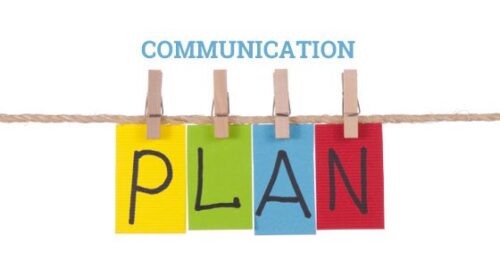How (and why) to Develop an Effective Long-Term Communications Plan
(Note: I was Googling my name to find something I had been quoted in and found this post. It appeared originally on PR Crossing and based on the picture, it must have been more than five years ago. Relevant then, relevant now, so decided to post it here.)
The famous adage “no man is an island” can be applied to companies, too. No company can survive on its own without identifying its audiences, defining key messages, and communicating those key points to its audiences in a consistent manner.
Long-term communications planning is a process that is often neglected. It is similar to the process of developing a solid long-term business plan for your organization, and in fact, the two plans should go hand in hand.
Deciding the role of communications in your organization is the primary reason to draft a communications plan, but such a plan is critical for several other reasons.
Sharpen your message. In the age of fast-paced information delivery, many people are on overload. You can spend 99% of your time attempting to reach your audience. However, by defining the key messages of your organization and linking those messages to your audience, you are establishing the communications groundwork for your organization.
Take advantage of opportunities. Once you’ve put together a communications plan for your organization, you can much more easily decide on appropriate communications outlets for your messaging. You will be able to seek out and take advantage of media opportunities fitting within your clearly defined plan.
Time your media push. A well-organized and defined plan should also provide you with a timeline for when products will be launched, important initiatives will be introduced, etc.
An effective communications plan will permeate every corner of your organization, including every letter, brochure, and newsletter your company sends out…these are all part of communications. An effective long-term plan will take all of these aspects into consideration, in addition to media relations. Without further ado, following are the steps to developing a solid communications plan:
Form a committee. A good plan requires broad participation from your organization. This will give you a broad spectrum of views about your organization and issues. The committee can be headed by your public relations manager or an outside third-party public relations facilitator.
Determine your goals. As with any plan, the starting point is setting your goals. What do you want to achieve with a media/communications strategy?
How do you want your organization to be perceived? How people perceive your organization is critical to your communications planning. If your long-term plan calls for your company to radically differ from current viewpoints about your organization, then your plan must address these changes. If not, the plan can focus on reinforcing current attitudes about your company.
How do you want your issues and/or programs to be perceived? Are your issues even currently seen as issues by the public? How is each of your issues “framed” at this time in the public debate? Who is perceived as the problem, and who is perceived as part of the solution?
What are your objectives? For each goal, you need to come up with objectives that are specific, measurable, and achievable. The more specific you are with your objectives, the higher the rate of success for your goals.
What messages do you want to communicate? Your messages—what you say about your organization, programs, and issues—will flow from your goals and objectives. But they need careful thought. State your messages in a specific, positive, and, if possible, action-oriented phraseology.
Who are your target audiences? Much of this will also flow from your goals and objectives. “Know your audience” is the crucial step to implementing your plan.
What are your strategies to reach these audiences? Here is the point where many start their communications planning. It’s often very easy for people to jump right in with strategies without laying the crucial groundwork that makes up a plan. Fortunately, if you have gone through a planning process that has led to specific objectives, clear messages, and target audiences, your task of coming up with strategies is much easier and more effective.
What resources can you devote? You may have developed great strategies for communicating well-honed messages, but if you have few resources to devote to this task, you won’t accomplish much. Your plan should include a budget figure (to produce and mail releases and produce a brochure and newsletter—all the direct costs) plus a list of who will have the communications duties and the percentage of time each person will devote to communications tasks.
Who does what, and when? An itemized list of tasks and assignments will make the plan operational for the organization. Make sure each person or group clearly understands their role. An effective, specific communications plan is a must for every organization. With foresight and careful preparation, an effective plan can be carried out with much success. The question is “When will you take the time to draft the plan?”

